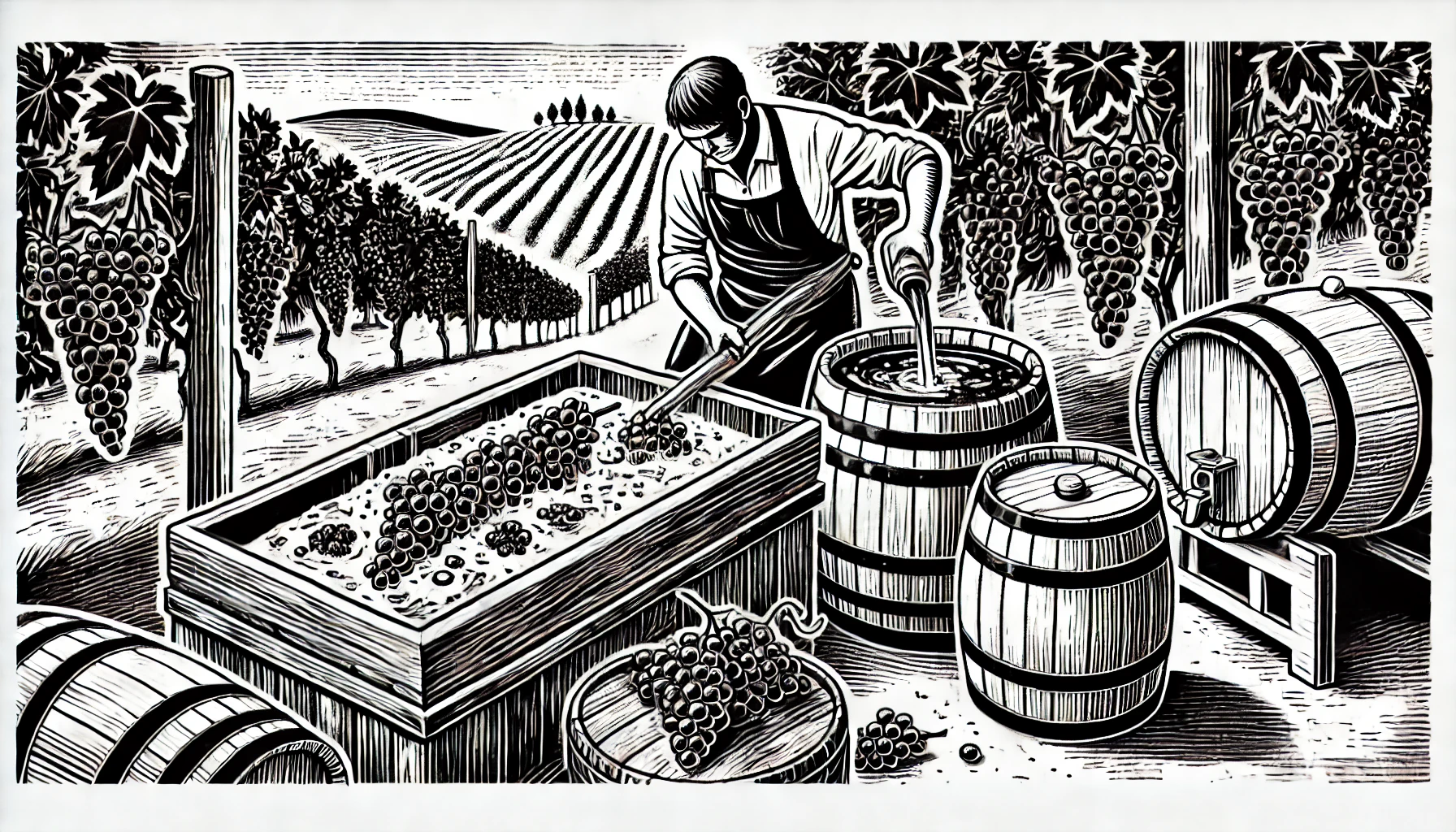
Whole cluster fermentation is a winemaking technique in which entire grape clusters, including the stems, are used during fermentation. This process contrasts with the more common method of destemming, where only the grapes are fermented after the stems are removed. Whole cluster fermentation introduces a variety of elements—such as the stems themselves—into the winemaking process, which can significantly impact the wine’s structure, flavor, and tannin profile.
One of the key benefits of whole cluster fermentation is the additional complexity it brings to the wine. The stems contribute tannins, which are compounds that affect the texture and mouthfeel of the wine. These tannins tend to be different from the ones found in the grape skins, offering a more subtle, elegant structure. This method often results in wines with a more pronounced tannic backbone, giving them greater aging potential and a firmer texture. However, too many stems can make the wine overly astringent or green, so winemakers must balance the amount of whole cluster used based on the grape variety and vintage conditions.
The Aromatic Profile
Whole cluster fermentation also influences a wine’s aromatic profile. The process can introduce earthy, herbal, and spicy aromas, often referred to as “stemmy” or “forest floor” notes. These characteristics can add complexity and depth, especially to lighter-bodied varieties like Pinot Noir, which often benefits from the method’s ability to bring out floral and spicy elements. Wines produced with whole cluster fermentation may also exhibit more vibrant fruit flavors, as the technique slows down the release of sugars, allowing for more nuanced and layered fruit expressions.
This technique is particularly popular in regions where the grapes ripen with balanced sugar and acidity, such as Burgundy for Pinot Noir or Northern Rhône for Syrah. However, the decision to use whole cluster fermentation depends on several factors, including the ripeness of the stems, the winemaker’s goals, and the grape variety. If the stems aren’t fully ripe, they can impart harsh or green flavors, which may detract from the wine’s overall quality.
Whole cluster fermentation requires skill and experience, as it’s a balancing act between enhancing complexity and avoiding overpowering stem influences. When done correctly, it produces wines with added structure, complexity, and an intriguing mix of flavors that evolve with time. This technique offers an interesting alternative to traditional winemaking practices and is favored by winemakers looking to create unique and expressive wines with greater depth.
Curious about more wine terms and insights? Visit our Wine Wiki section and explore the basic wine terms for expert definitions and tips!